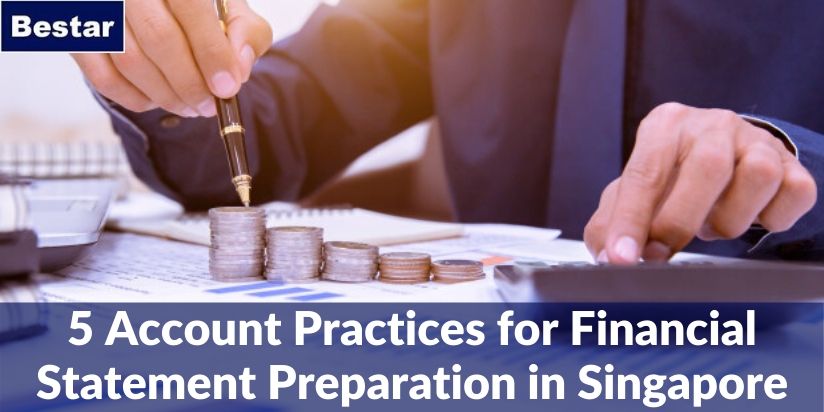Accounting Practices in Singapore
When it comes to preparing financial statements for an organization,extra care must be taken to maintain information accuracy and minimise the risk of errors in accounting practices. If you own a business in Singapore, it’s mandatory to prepare the financial statements adhering to the regulatory framework of Singapore Financial Reporting Standards (SFRS) and Singapore Companies Act.
Here are five Accounting Practices you should keep in mind to successfully prepare financial statements for your company in Singapore:
1. Correct Entry of Gains and Revenues
Gains is the net of proceeds accrued from long-term asset sales, after taking away the book value. Gain for a corporation occurs when the proceeds exceed the book value. A corporation can earn revenue from primary and secondary activities. Revenues from primary activities are called operating revenues and those earned from secondary activities are called non-operating revenues. Be careful not to confuse revenues earned with receipts. Report both operating and non-operating revenues under profit and loss statements when the sale is made and earned and not when payment is collected.
2. Single Stem Income Statements
One of the most common accounting practices, in terms of preparing income, is the single step statement format and is mostly used for businesses that use simple operations. It is important to note here that single step statements involve critical information like time period data precision and time interval reported within the heading. In this format, there are single sub-totals of revenues, expenses and net gain or loss.
3. Reporting Discontinued Operations
Accountants should note discontinued operations in their accounting practices, for corporation who have removed or suspended significant parts of their business. Income tax should be included as part of income statement. Gains should be arrived at after deducting income tax expenses associated with the gains and losses incurred should be arrived at after deducting income tax savings associated with it.
4. Multi-Step Income Statement
This format involves manifold subtraction to calculate the net income, where details and segregation on losses, gains and gross profit, operating revenues, operating expenses, non operating revenues and non-operating expenses can be expected. This is another one of the common accounting practices and are mostly used for businesses that rely on complex operations.
5. Expenses and Losses
Expenses incurred by corporations to earn operating revenues are primary activities and should be reflected in the same income statement where the relevant sales are reported, even if payment has been made or not. Costs that are used up or those that have expired during the accounting period for which the income statement is being drawn, should be included as part of the expenses of that particular accounting period.
Losses are computed as the net of two amounts. Essentially, it’s the book value of the asset sold minus the income received, where income is less than the book value.
If you’re handling the accounts for your company in Singapore, it is important to keep these basic points in mind while preparing the financial statements.







